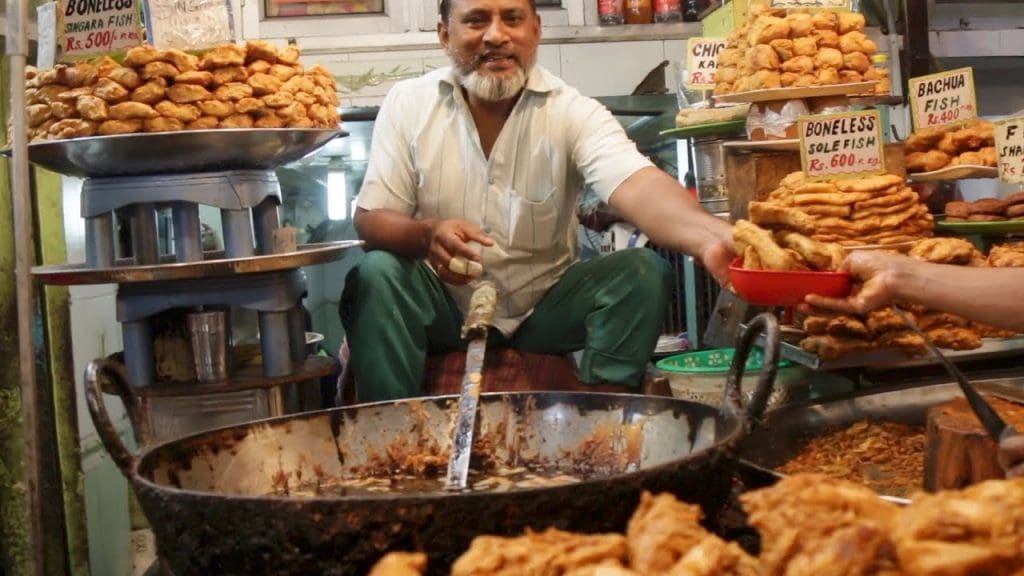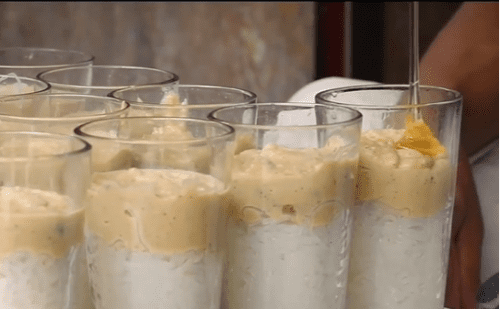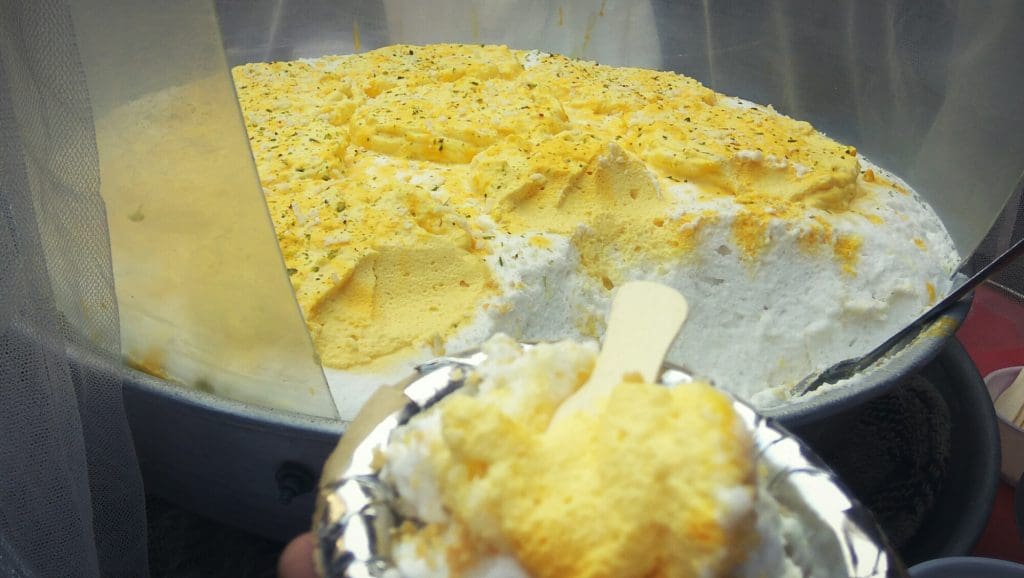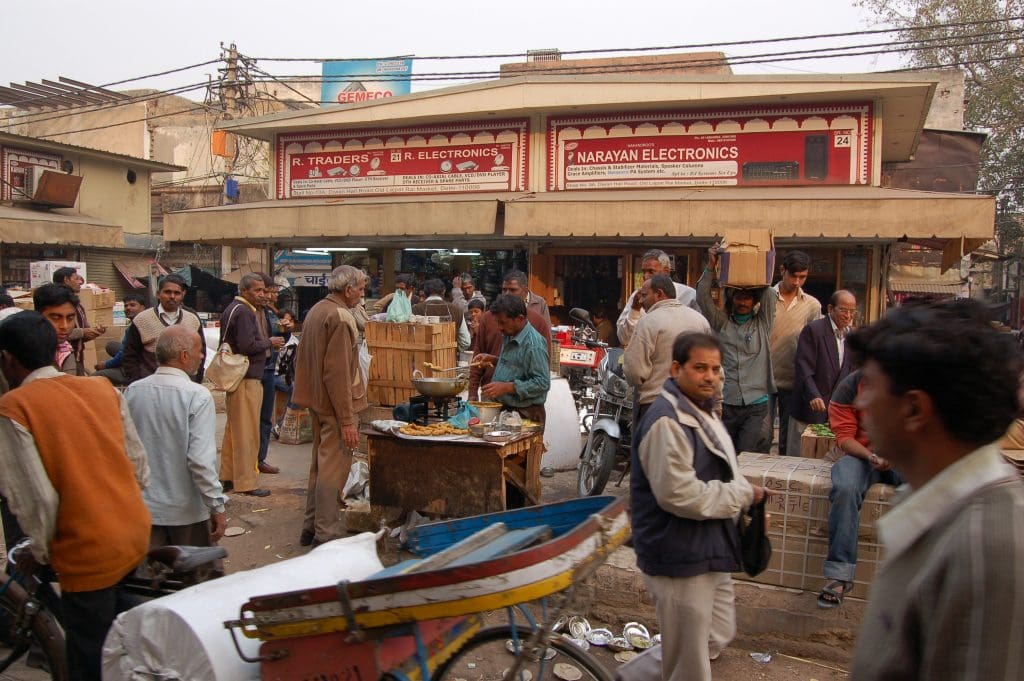Khari Baoli, Daulat ki Chaat, Paranthe wali Galli, GoleHatti, Natraj Dahi Bhalla, Dharampura Haveli… does it ring any bells? Yes! It’s Chandni Chowk – the Heritage Trail of Purani Dilli aka Old Delhi!

Thickly populated serpentine lanes swarming with people, enthralling culinary traditions, varied and authentic delicacies, sprawling wholesale shops, enduringly beautiful Havelis in the gullies, the whimsical allure of royal monuments dating back to the Mughal era – this is ‘The Old City’ in a nutshell.
Sneak Peek into the Past
One of India’s largest wholesale markets, Chandni Chowk dates back to the 17th century. It came into existence when Shah Jahan shifted his capital to Shahjahanabad, now Old Delhi, from Agra. The ‘Moonlit Square’, as the name suggests, was designed by Jahanara Begum, the eldest daughter of Shah Jahan. The Bazaar was divided by the channel from the Yamuna river and back in the day, a pool marked the center of the square. The water body reflected the shimmering light of the moon, hence the name Chandni Chowk!
The bazaar was equi-divided into three sections – Urdu Bazaar, Johri Bazaar, and Fatehpuri Bazaar. Earlier, just the square with the reflecting pool in the center was known as Chandni Chowk whereas now it entails the entire region between Lahori Gate of the Red Fort and Fatehpuri Masjid.
Apparently, the presence of numerous religious structures like Jama Masjid, Fatehpuri Masjid, Gurdwara Sis Ganj Sahib, Gauri Shankar Temple, Sri Digambar Jain Lal Mandir, and Central Baptist Church denotes the religious harmony enjoyed by the residents in the past and rich cultural heritage of the bazaar.
“Delhi-food capital”! Ever wondered ‘why’?
Have you ever wondered why the capital city of India is called the ‘Delhi-Food capital’? You must have guessed it by now – The ubiquitous love for food among Delhiites and the presence of rich food cultures, especially the Mughlai cuisine. The mouth-watering Street food at Chandni Chowk has earned it the title of ‘Food Capital of India’.
Mughlai Cuisine
The prevalence of Mughlai Cuisinein Delhi, especially Chandni Chowk, can be traced back to the Mughal era as the Red Fort has been the seat of royalty for over 200 years. Here are a few of the marvels left behind by the Mughal Emperors!
- The Kebabs
An Iranian dish by origin, Kebabs were widely consumed during the Delhi Sultanate. Hajji Karimuddin, one of the sons of Mohammed Aziz, the royal cook at the Mughal Court, opened a Dhaba which transformed into Karim’s Hotel. It is now run by the fourth generation in the family and offers sinfully delicious delicacies of Mughal Cuisine, be it Shami Kebab, Kathi Kebab, or Boti Kebab. The other famous eateries that offer kebabs are Al Jawahar, Ustad Moinuddin kebabs, Bhaijaan Kebabs, Lalu Kababee, Aslam Chicken, and many more.
- Nihari
The stew that consists of slow-cooked meat flavored with long pepper was served for breakfast in the royal household. Be it Paya Nihari, Bheja Nihari, or Nalli Nihari, it is thoroughly enjoyed by people from all walks of life. You can get best Mutton Nihari at Karims, Al Jawahar and Haaji Sharbati Nihari Wale.
Other savory dishes from Mughlai Cuisine that Chandni Chowk has to offer include Biryani, Changezi Chicken, Mutton Korma, Changezi Chicken, Mutton Burra, and the list goes on.
- Kulfi and Other Sweets
The world-famous Kulfi is also a gift from the Mughal period for us. Ghantewala, opened in 1790 in Chandni Chowk, is now operated by the fifth generation of the family.
It still carries the same charm and supremacy in serving Karachi Halwa. Kuremal Mohan Lal Kulfi Wale, Bade Mian Ki Kheer, Kallan Sweets, Jalebiwala near Dariba Kalan, Giani di Hatti, etc are unmissable places that you must visit if you have a sweet tooth. If not, just get one and INDULGE into this sinful bliss.

Street Food – The Bliss!
Chandni Chowk is sprawled with street food joints. The aroma of food fills every nook and corner of the bazaar. No day is an ordinary day in Chandni Chowk. The streets are abuzz with the namkeenwallahs, kachori, and chaats. In fact, Chandni Chowk is home to the original Haldirams and Giani’s.

Natraj Dahi Bhalle Wala, in action since the 1940s, is the most popular food joint in Delhi. All the Dahi Bhalla fans, take note! Chole Bhature at GoleHatti, Urad dal Kachori at Jung Bahadur Kachori Wala, Kulle ki Chaat, Papri Chaat at Ashok Chaat Bhandar, Daulat ki Chaat, Gol Gappe, Gobhi-Matar Samosas are all the integral part of culinary adventure at Chandni Chowk. The mouth-watering Rabri Faluda at Giani’s and desi ghee Jalebis at Old Famous Jalebi Wala are the legends of the area. And of course, Paranthe wali Galli!!
The oldest among all the parathas shops is that of Pandit Gaya Prasad Shiv Charan, serving parathas since 1872. More than thirty varieties of parathas are served with Mint Chutney, Tamarind Chutney, pickle, and Aloo Sabzi. Do not miss out on this one. Highly recommended!
What else is Chandni Chowk famous for?
Well, if just the delicious food is not enough to convince you to plan a visit, there are plenty of other reasons which make Chandni Chowk a must-visit place in Delhi.
Ancient Havelis – Windows to the Past
Chandni Chowk has an intricate network of narrow alleys wherein numerous Havelis from the 19th century can be found, to name a few, Begum Samru’s palace (Bhagirath Palace), Dharampura Haveli, Chunnamal Haveli, Haksar Haveli, Ghalib ki Haveli, Haveli Raja Jugal Kishore, Zeenat Mahal Haveli, etc. Few of these historic mansions are now being used as shops. Despite the dilapidated states of the Havelis, you will surely get a sneak peek into the lives of our predecessors by visiting these Havelis.
The street of the Incomparable Pearl

Dariba Kalan market, next to the Paranthe Wali Gali, is world-famous for the amazing and affordable silver jewelry, right from the times of Shah Jahan. Back then, the bazaar was also known as ‘Silver Street’ owing to its silver merchants. This is another tale about how the bazaar acquired its name. Silver is known as ‘Chandi’ in Hindi and the present name, Chandni is just a slight variation from Chandi.
200-year old Perfumery
Chandni Chowk in Delhi is the home to one of the oldest perfumery that goes by the name ‘Gulab Singh Johri Mal’. The seventh generation of the family now runs the shop. That’s the beauty of this bazaar lying in the hearts of Purani Dilli. The livelihood and cultural traditions are well-preserved by the descendants, to date. A must-visit place!
Wholesale Spice at Khari Baoli
Lying in the vicinity of the Red Fort, the market came into existence in 1650 and was designed by Fatehpuri Begum, one of many wives of Shah Jahan. Over the years, the market earned the title ‘The Largest Spice Market in Asia’.
Along with the variety of local spices, you will also find exotic nuts and dry fruit imported from the neighboring countries here. Chandni Chowk serves the food-lovers in every possible way, not just through its culinary extravaganza but also by equipping them with the wonderful spices to satisfy their inner chef.
For all the fashion lovers out there!
Katra Neel market is the best-known place for fabrics in Delhi. Back in the day, it was renowned for its indigo manufacturing and was well traversed by the traders. Over time, it transformed into the wholesale cloth market and it caters to the clothing needs of people from all walks of life.
The market has earned a name for its menswear stores. In fact, it houses the first retail store of Raymonds in Old Delhi. For all the fashion lovers out there, visit Katra Neel and all types of fabrics in every possible color will be at your disposal. Mark my words!
Do we hear the Wedding Bells?
Chandni Chowk needs no introduction when it comes to wedding shopping, be it the wedding gowns, Lehengas, or accessories. The narrow alleys of the bazaar are swamped by the soon-to-be brides and grooms on the quest for the dream attires for their special day.
The decorations and catering needs of Indian weddings are also catered by the bazaar. What makes it a preferred spot for wedding shopping is the plethora of choices to choose from. Do you still need more convincing?
The Takeaway
Being the perfect embodiment of the dichotomy between modernity and the ‘old way of living’, Chandni Chowk is a full package. Although the bazaar may no longer bear the grandeur of the bygone period, it still holds a very important place as the signage of our past. If there’s any ‘have-all’ market in Delhi, it’s Chandni Chowk. If not already, plan your visit to Chandni Chowk for rare experiences!
Read More : Latest



